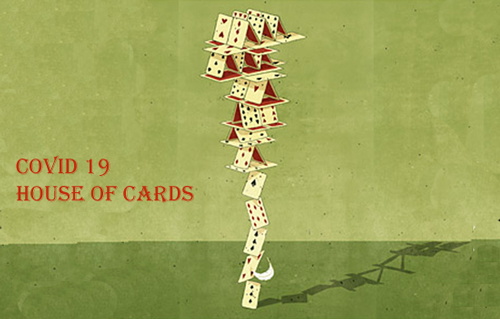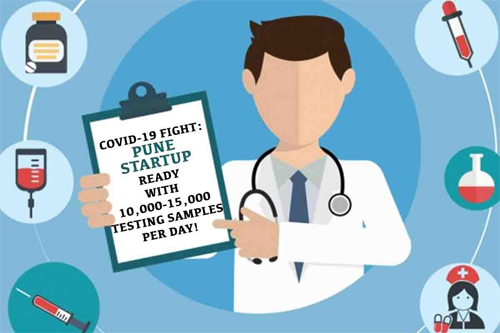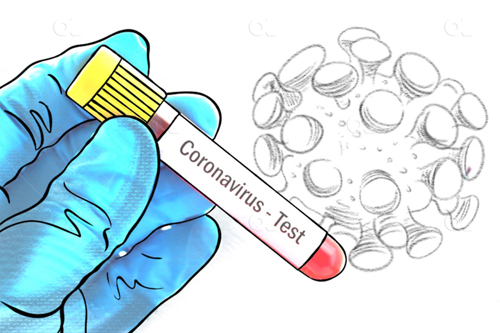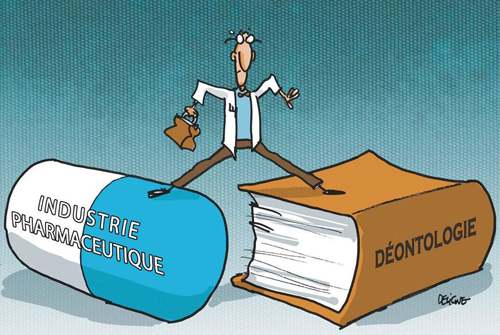The Tests: The Achilles Heel of the COVID-19 House of Cards
Dr. Pascal Sacré, an ICU doctor at a hospital in Charleroi, Belgium, puts together a useful overview of the tests currently being relied on, rightly calling COVID-19 a “house of cards”.

It all smells of a scam. Imagine:
– You get a false positive PCR test result (a highly likely occurrence with this test): “You’re sick. You need to stay in quarantine for 14 days and we need to know who you’ve been in contact with’ so that those poor schmucks can also be quarantined.” Medical police state. As Dr. Sacré explains below, a positive PCR test result says nothing about your actually being sick – you’re probably not; nor in fact if you’re even carrying a sufficient quantity of the virus.
– You get a negative serology test result (again, highly likely): “You’re at risk. You’ve not had the disease so you need to be protected with a vaccine.” Medical police state. Dr. Sunetra Gupta has explained why, in fact, you may have been exposed to the virus and not gotten sick, yet your level of protection comes either from your own genetic predisposition or from previous exposure to the common cold virus. A negative serology test result is therefore meaningless, which means that mass serology testing programs, upon which public policy is determined, will produce a false picture of overall immunity being low in the population when it’s not.
The Tests: The Achilles Heel of the COVID-19 House of Cards
By Dr. Pascal Sacré
Looking for more truth and getting closer to the truth is the best antidote to fear.
The tool is not the problem, it’s what we do with it.
Tests that are not reliable:
– False negatives (real patients not detected);
– False positives (patients who are not positive);
– Tests that detect fragments of the virus and not the virus itself;
– Tests that don’t quantify the viral load;
– Test kits infected with the virus itself: you could catch it by getting tested!
So, you’ve been tested?… Negative? Positive?
Maybe you’re like most people, eager to find out if you’ve got it or better yet, prove that you’re immune to it.
With this article, I don’t want to add a layer of fear to the pandemic of panic, spread by our dear media in recent months. Nevertheless, even if some people don’t want to “know anything” and will do whatever they are told to do, e.g. wearing a mask everywhere all the time, staying away from your family and friends, not daring to go out or take public transport without your “armour and visor”, not daring to touch anything without wearing gloves stuck to the skin as a result of sweating etc…, I think that looking for more truth and getting closer to the truth is the best antidote to fear.
So, these tests! What are they?
Introduction: Diagnosing COVID-19 disease
People confuse the disease with the agent accused of causing it. COVID-19 refers to the disease characterized by “airway involvement” with a wide variety of symptom patterns. It is caused by a virus, SARS-CoV-2, of the coronavirus family, SARS for Severe Acute Respiratory Syndrome. Another coronavirus of this type, SARS-CoV-1, had already occurred in 2003, less contagious but more dangerous (in terms of mortality).
First, on the one hand, you have a disease marked by the existence of signs or symptoms. [Not be confused with the causative virus.]
The diagnosis is clinical!
Major signs/symptoms:
1. Cough;
2. Dyspnea (difficulty breathing);
3. Chest pain;
4. Anosmia (loss of sense of smell);
5. Dysgeusia (taste abnormality) with no other apparent cause.
Minor signs/symptoms:
1. Fever;
2. Muscle aches and pains;
3. Fatigue;
4. Rhinitis (cold);
5. Sore throat;
6. Headaches;
7. Anorexia (loss of appetite and weight loss);
8. Acute confusion;
9. Sudden fall without apparent cause.
As you can see, it’s a bit of everything and anything. A little fever and a troubled sense of smell (which can be caused by a zinc deficiency) and hop! you’re clinically suspect of COVID-19.

Second, on the other hand, you are diagnosed as having the “causative virus”, SARS-CoV-2, linked to this clinical picture with possibly (severe forms) a severe acute respiratory syndrome (SARS) that can lead to hospitalization or even admission to the intensive care unit.
The main technique used around the world, in hospitals as well as by general practitioners and/or mobile screening centres, to detect the presence of the virus is called RT-PCR. This technique confirms the presence of SARS-CoV-2 (a fragment actually), not the disease!
Tests for the diagnosis of the presence of SARS-CoV-2 coronavirus
1. RT-PCR, for Reverse Transcription-Polymerase Chain Reaction, invented in 1985 by the Nobel Prize winner in Chemistry (1993), Kary Mullis.
It is a machine capable of detecting the smallest amount of DNA or RNA (nucleic acids) present in the cell being studied. It detects and then amplifies the detected material, much like a photocopier-enhancer.
The material detected is RNA in the case of the SARS-CoV-2 coronavirus. The primers specific to the genetic material of the virus under study, in this case SARS-CoV-2, are all that is needed to detect the slightest trace of it in the cells collected.
A few specifications before going any further:
– The sensitivity of the test is the ease with which the test identifies the target.
– The specificity of the test is the ability of the test to identify the correct target and not another one.
The ideal test is both highly sensitive (100%) and highly specific (100%).
Is RT-PCR highly sensitive and highly specific? It depends. It gives:
– False negatives: RT-PCR comes back negative for SARS-CoV-2 even though the patient is infected. The less sensitive the test is, the more false negatives will occur.
– False positive: RT-PCR comes back positive for SARS-CoV-2 when the patient is NOT infected. The less specific the test is, the more false positives will occur.
Can you imagine the possible dramatic consequences of such errors, in terms of contagion, contamination, improper containment or epidemiological evaluation?
In the literature, the PCR technique is called “rapid, sensitive and reproducible”. For the WHO, our health institutes, most of the media, everything is fine. However, it’s not all that idyllic!
The first disappointment is that RT-PCR does not detect the virus, but a genetic trace (RNA) of the virus, which is not the same thing. A positive RT-PCR test does not necessarily indicate the presence of a complete virus. It is the complete, intact virus that is the transmissible actor of COVID-19. As the FDA [based on CDC] admits, the detection of viral RNA by RT-PCR does not necessarily indicate an active viral infection (with clinical syndrome)!
A second disappointment is that RT-PCR cannot quantify the viral load since it artificially amplifies (multiplies) the detected genetic material. It only says whether the virus is present or not, and again, only traces of the virus, not the whole virus.
Third disappointment, the technique is complex and has many limitations! Even more so in detecting RNA viruses as in the case of SARS-CoV-2.
“The interpretation of PCR results is difficult. Any PCR must be performed on a good quality sample and adapted to the indication. For some viral infections, a positive PCR is not synonymous with disease… The dialogue between the clinician and the microbiologist is essential for a good diagnosis.” (RMS, 2007, Vol 3).
In most cases, the cells studied come from the upper respiratory tract, and are collected using a long cotton swab inserted into the nasal cavity at a relatively deep level. It is said that to be effective, the procedure must be painful for the person being tested.
If the cells contain the smallest nucleic fragment (RNA) of the SARS-CoV-2 coronavirus, the theory is that it will be detected by RT-PCR. But not that the patient is necessarily sick with COVID-19!

In an article from the Swiss Medical Journal of 2005, we read that:
“For some infections, PCR tests are considered as a reference method while for others, they are only an aid to diagnosis. Contact with the laboratory performing the analysis is important in order to interpret the PCR results correctly.”
For respiratory infections,
“Serology (blood test – see below) remains the definitive proof of an infection that has caused an immune response and is therefore still considered… as a reference test.”
For coronaviruses, culture is difficult and detection by RT-PCR is the technique of choice. But many steps are required to prime and amplify the specific genetic material, and it is a complex and very sophisticated process with many opportunities for misinterpretation or misrepresentation: mishandling, mis-calibrated or contaminated equipment (from the person being tested, the laboratory technician or the environment), mis-storage or misdirection and the whole result can be compromised.
PCR tests can be falsified when the sample is contaminated with other strains, especially bacterial strains.
There is a significant risk of false negatives, as reported on the Alternative Well-Being website:
1 The test is badly done;
2 The virus is elsewhere (not in the site where the sample is taken);
3 The tests have not been approved;
4 The virus is already mutating.
There is an even higher risk of false positives, as pointed out by the independent journalist Pryska Ducoeurjoly, based on the Swiss Medical Journal (8 April 2020) and the French journal Prescrire.
2. Rapid antigenic test
A variant of PCR, the results of which may take 24 to 48 hours to be known, is a faster antigenic test (results in 15 minutes), certified by the Federal Agency for Medicines and Health Products in Belgium. It allows the detection of antigens (viral proteins), again from a nasopharyngeal swab.
However, it is much less specific! In one study, only 50% of patients confirmed positive by RT-PCR were detected by this antigenic test.
This test is not recommended by the WHO for the detection of COVID-19 disease. That says it all.
Tests for confirmation of viral infection and its follow-up
1. Serological tests
These tests are based on a blood test followed by an analysis in a specialized laboratory. We look for the presence of antibodies developed by the patient. This is used to find out whether the person has actually been in contact with SARS-CoV-2 (IgM) and whether they have become immune to it (IgG).
This is the test that many Belgians are eagerly awaiting and which will be reserved in priority for care personnel.
2. ELISA tests
These special serological tests (dozens of samples processed at one time) are carried out in university laboratories to monitor the evolution of antibodies over time and to assess the type and duration of immunity induced by SARS-CoV-2 infection.
What is the cost of these tests in Belgium?
1. For the molecular detection test (PCR), the RIZIV reimburses 46.81 EUR.
2. For the antigen detection test, the RIZIV reimburses 16.72 EUR.
3. For the antibody detection test (serological test), the RIZIV reimburses 9.60 EUR.
These amounts include all costs related to the test: sampling material, equipment, reagents, investment costs, quality monitoring, personnel costs, supervision, protective material, transport costs, etc. There is no patient co-payment.

Infected specimen collection kits!
As if that were not enough, we learn that batches of detection kits are infected with SARS-CoV-2, notably in the USA, Canada (Quebec), UK, Africa (Tanzania).
“As the new coronavirus began to spread across the country, the U.S. Centers for Disease Control and Prevention (CDC) sent contaminated test kits to the states in early February, according to a federal investigation.”
“Thousands of swabs ordered by Quebec City to test for COVID-19 were found to be potentially contaminated… Fungal contamination was found on several swabs. According to Nicolas Vigneault, spokesperson for the Ministère de la Santé et des Services Sociaux, the swabs came from a shipment received from China.”
“One batch of coronavirus tests, out of the millions expected by the UK, has been contaminated by the virus itself. The British government had ordered batches of tests for coronavirus from a laboratory. But one of these was infected by … Covid-19 itself,” the Telegraph explains, without giving any explanation as to why this unfortunate contamination occurred. The delivery of these tests was immediately cancelled.
“The Tanzanian President believes that the coronavirus epidemic is not yet on the scale of the official figures. According to him, the data on Covid-19 are being doctored by alarmist authorities, he denounced in his speech… He claims to have himself secretly tested a goat, a quail and a papaya, but to his astonishment the results were positive. He therefore questions the reliability of the tests. These positive results on animals and even plants are, for him, proof that people declared positive for the virus might not actually be carriers. This would mean that the real situation is not as alarming in Tanzania.”
That’s a lot of mistakes, all over the world, don’t you think? Strange, the lack of coverage in major Western media. It’s very serious though, and it calls into question the whole campaign of massive screening for this coronavirus.
The opinion of an international expert
John P. A. Ioannidis is not just anyone on the international medical scene. He is a professor of medicine and a researcher at Stanford University’s School of Medicine and School of Humanity and Science; he is also co-director, with Steven N. Ioannidis, of the Stanford Prevention Research Center, and Director of the Meta-Research Innovation Center at Stanford. He is one of the most recognized specialists in health epistemology.
He is adamant: “As the coronavirus pandemic unfolds, we’re making decisions without reliable data.” He confirms that the PCR tests used in the COVID-19 crisis are not reliable, despite the efforts of the media and our health institutes (Sciensano in Belgium) to make us believe so.
In summary
What a fiasco. The diagnostic tests represented above all by RT-PCR, a gene amplification technique, are far from having the expected reliability, which is crucial in a crisis such as the one we are going through.
Even if positive, the RT-PCR test only reveals an RNA fragment of the SARS-CoV-2 coronavirus, not the COVID-19 disease itself. In order to say that, we need a corresponding clinical picture! All other pathologies of the patient must be considered and if the patient dies, they must be taken into account before attributing death to COVID-19!
This is frightening when you imagine the possible unjustified consequences of decisions made on the basis of these tests:
– Confinement/quarantine;
– Unprecedented freedom-destroying measures;
– Hospital and health centre upheavals;
– Serious diagnoses may be wrongly given to terrorized people who are actually in good health;
– Social distancing with heavy consequences on human relations;
– Major economic and social impact, the real scope of which is currently unknown;
– Suspension of all social activities (schools, restaurants, leisure activities);
– Whole population tracking and policing project.
Let’s not forget mandatory vaccination when those test subjects and monkeys stop being sick…
I think that in the face of so much self-sustained insanity, despite the widespread virus of fear, the best antidote is to stay calm. Come to your senses. Reassess the true extent of this disease (mortality below 3% [of positive cases] as of May 26, 2020). The SARS-CoV-2 coronavirus will have to take its rightful place among all other health problems, no more, no less. And we may we quickly live again without masks, without social distance and without laws which threaten civil rights. And learn from so many mistakes that have been done by the authorities in this crisis.
yogaesoteric
July 5, 2020
